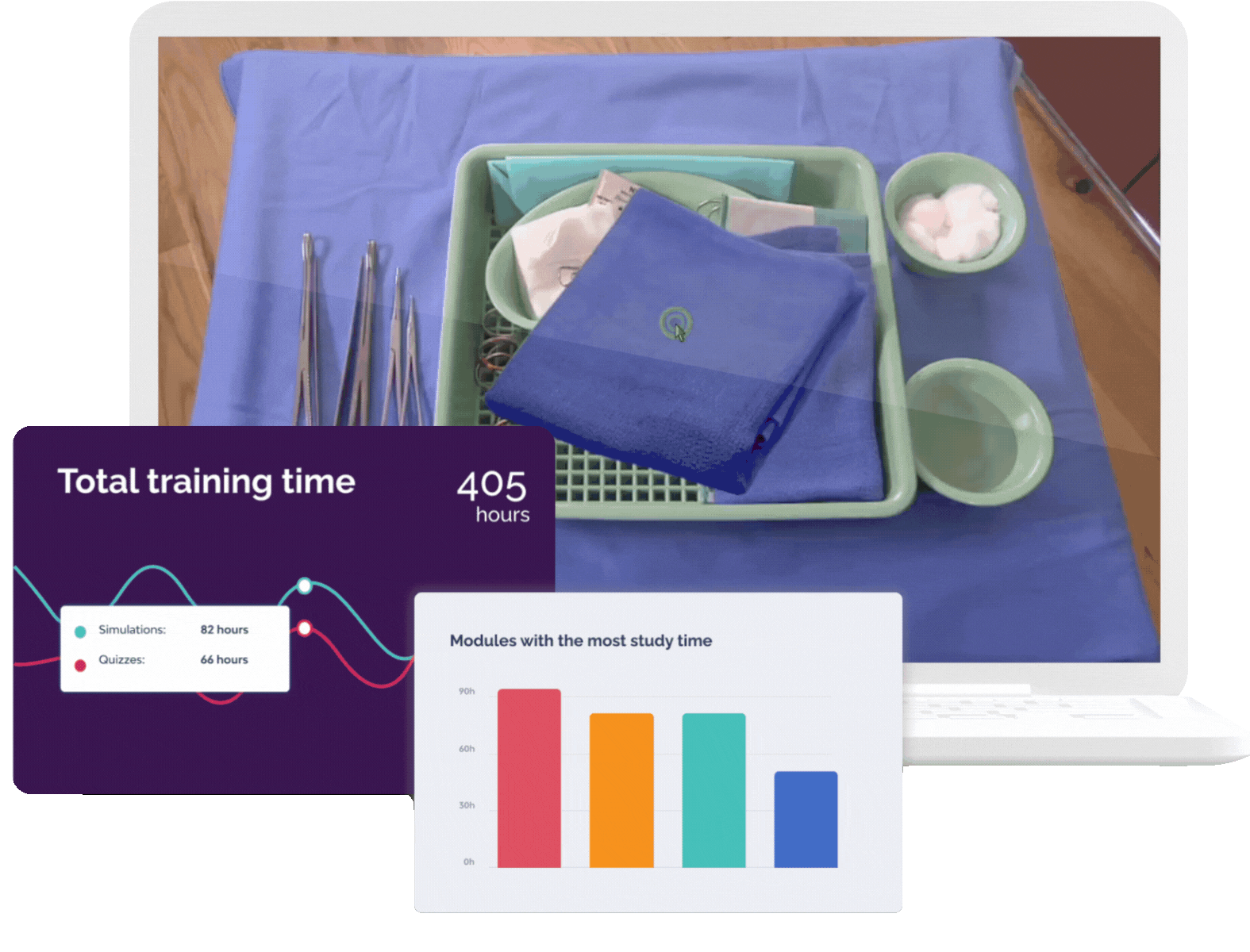Blog
Choosing an LMS for the Healthcare Industry
Follow these tips for choosing the right healthcare LMS that streamlines compliance, training, and ongoing education.
⟶Stronger training means stronger care. Litmos helps providers deliver healthcare compliance training and essential skills through an easy-to-use LMS that improves staff performance, reduces burnout, and drives better patient outcomes.

Healthcare organizations use Litmos to deliver and track training and compliance programs that directly improve patient experiences and keep revenue cycles moving. With our easy-to-use LMS platform, healthcare content and simulations, your care teams can quickly pick up best practices, critical skills, and meet accreditations.
Stay on top of regulations with healthcare compliance training content built around industry standards like HIPAA and OSHA, and accreditations like ACCME and ADA. Litmos makes it easy for healthcare organizations to deliver and track accredited, audit-ready, state and country specific training and continued education.
Protect sensitive healthcare data with enterprise-level safeguards. Litmos keeps information safe with encryption, authentication, and application security across all healthcare LMS systems. Our AI Assistant follows the same high standards, so your information stays protected within your instance.
Get your employee training program up and running in weeks instead of months and with 50+ integrations and APIs, connecting Litmos to your existing tech stack is easy. Once set up, your teams can hit the ground running on desktop or mobile, online or offline, in 37+ languages.
Help build real-world skills through practice with immersive, hands-on learning. Litmos offers over 200 specialty clinical simulation courses run seamlessly on Litmos’ AI learning platform. Elevate readiness, retention and confidence with AI-tailored and interactive learning.
Staff are stretched thin, and training often adds to the pressure. Litmos gives healthcare workers short, accessible courses they can complete anytime, on any device—helping them stay sharp without feeling overwhelmed or burned out.
Every interaction matters in healthcare. With Litmos, providers can upskill employees quickly, reinforce critical skills, and create a consistent standard of care that directly improves the patient experience.
From HIPAA to infection control, healthcare regulations are always evolving. Litmos gives your teams access to a full library of up-to-date compliance courses and makes it simple to assign, track, and report on training so nothing slips through the cracks.
Learn how we partner with our clients to deliver leading learning solutions that make a measurable impact on staff and business performance in healthcare.
Explore new healthcare training and immersive healthcare simulations, now available through the Litmos LMS with the SIMTICS course collection.

Explore healthcare training tips, trends, and expert insights.

Blog
Follow these tips for choosing the right healthcare LMS that streamlines compliance, training, and ongoing education.
⟶
Blog
Discover how targeted leadership training and mentoring reduce burnout, strengthen executive pipelines, and support long-term retention.
⟶
Blog
See how short, focused learning modules can boost knowledge retention, reduce training time, and better support on-the-job learning.
⟶